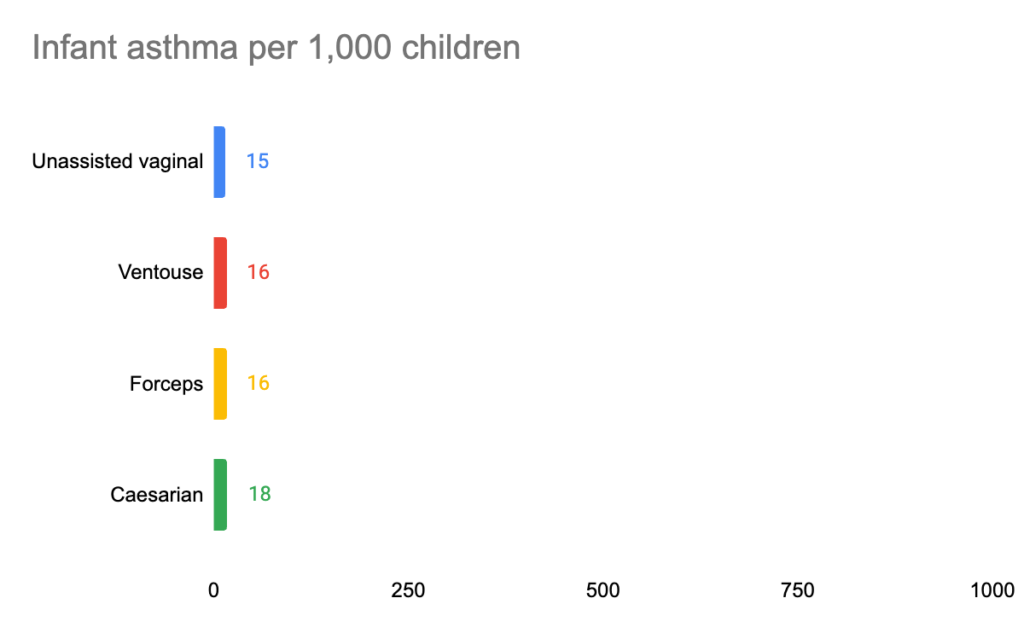Last Updated on November 6, 2023 by Birth Facts
Different modes of deliveries also carry different risks for newborns. The supporting evidence for these numbers is here.
Newborn mortality
Children born by caesarian have higher rates of mortality than children born by other delivery modes, though the absolute increase is very small.

For every 10,000 children born by planned c-section, an extra 2 will die compared to if they had been born by planned vaginal delivery.
Note that a planned vaginal delivery is one in which the mother plans prior to labour to deliver vaginally. This could end in an unassisted vaginal delivery, but also forceps, ventouse, or unplanned c-section.
Babies delivered by forceps, ventouse or unplanned c-section are likely to face a higher risk of death than those delivered by unassisted vaginal, but that does not necessarily mean that those modes of delivery cause that increased risk. The reason for this is that forceps, ventouse and unplanned c-section are often done in order to save the life of the mother or baby, and so they might reduce the risk of death overall. (We discuss the issue of confounding in more detail on the supporting evidence page).
There is insufficient evidence to provide a reliable estimate for the risks from forceps, ventouse and unplanned c-section.
Asthma
There is some evidence that children born by instrumental vaginal delivery or caesarian are more likely to suffer respiratory problems. However, the absolute increase in the risk is small.

For every 1,000 children born by caesarian an extra 2 will have asthma compared to if they had been born by unassisted vaginal delivery